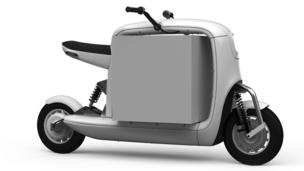In many parts of the world, the scooter is one of the most popular ways to get around. City streets are crowded with the small two-wheeled vehicles, sometimes carrying one passenger, but often carrying two or more people, their children and their cargo. Small motorcycles can be a vital form of transport for farmers to get their produce to market, or parents to get their children to school or medical care. So,drivers and their families, pets, livestock and boxes and bags often have to balance precariously on two wheels.More and more scooters are taking to the streets of South American cities. In many Asian cities they’re the dominant form of transport. They can be cheap to own and operate, and they can be faster than the car in congested cities. But scooters are also a source of urban pollution, in terms of both emissions and noise. Their small engines burn a combination of oil and gasoline relatively inefficiently compared to an average modern car, and routine maintenance isn't always carried out
Lit Motors, a small company basen in San Francisco. California I profiled in my last article, believes it might have a solution. By going back to the drawing board and designing an electric scooter for carrying cargo, it has come up with a design that it says should be safer, more efficient, more useful, but no more expensive. These are big goals for a small machine.The first thing you notice when you look at the new cargo scooter is actually an absence, or a gap, in the middle of the machine. Right in the centre, approximately where the engine would sit underneath the driver, there is a square hole which can accommodate boxes . The driver sits on a saddle right at the back. The total cargo capacity is estimated to be up to 90kg, not including the weight of the rider.


No comments:
Post a Comment